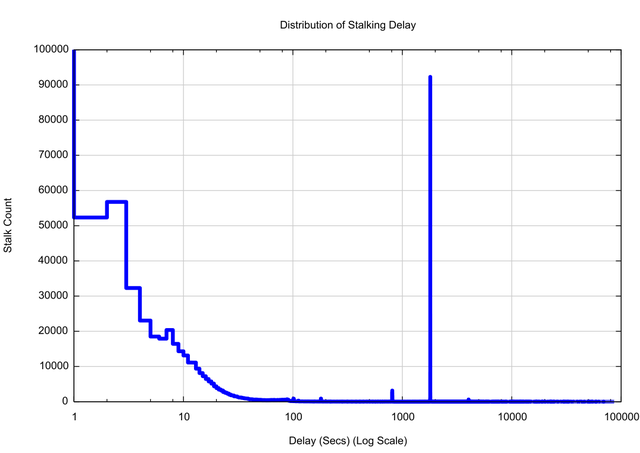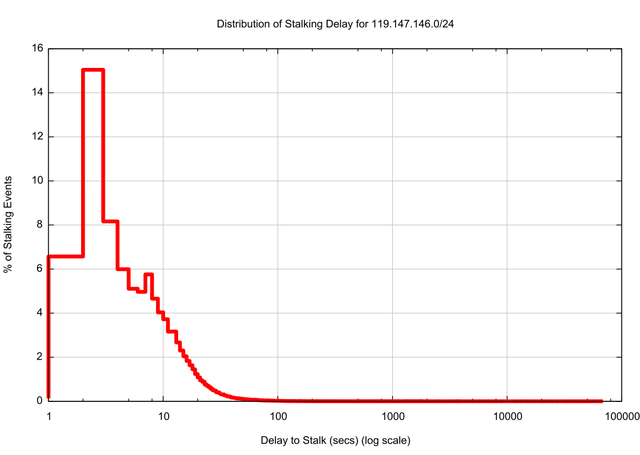Much has been said over the pasts year or so about various forms of cyber spying. The United States has accused the Chinese of cyber espionage and stealing industrial secrets. A former contractor to the United States' NSA, Edward Snowden, has accused various US intelligence agencies of systematic examination of activity on various popular social network services, through a program called “PRISM”. These days cloud services may be all the vogue, but there is also an emerging understanding that once your data heads off into one of these clouds, then it’s no longer necessarily entirely your data; it may have become somebody else's data too.
And the rules and protocols relating to third party access to what used to be your data is no longer necessarily the rules and protocols as defined by your country’s legislative and regulatory framework. Other rules and protocols that are used in other countries may apply for third party access to what used to be your data. And perhaps if you are not a citizen of this other country you may have few, if any, rights regarding the privacy of this data, or any rights regarding the secure handling of personally identifying information in this foreign regime.
Obviously, all of this has caused much public debate. For various intelligence agencies the Internet represents what they claim is an essential source of valuable information. This information, they say, is vital to their work of protecting the security and safety of the citizens of their country. For others this information gathering activity represents an abuse of privilege and power, as the more traditional process of judicial oversight and various checks and balances in executing warrants to eavesdrop on individual's activities appear to have been discarded in what looks to be an undisciplined rush to exploit this rich vein of online information.
Doubtless, this is a debate that will continue for many years to come, as finding the appropriate balance between these often conflicting interests is never an easy task. However, much of this public debate is carried out with a paucity of hard information. How is this online snooping carried out? Who is looking at whom? Can we see this digital snooping happen?
We saw an inadvertent instance of this form of online snooping when, in June 2012, a major Australian carrier, Telstra, appeared to breach the provisions of national telecommunications legislation when they apparently configured equipment in their mobile data network that intercepted customer's web fetches and sent a copy of these intercepted URLs to a third party located in the United States. Telstra gave every appearance of being unconcerned about this when they called such digital stalking "a normal network operation," while others appeared to be very concerned about the abuse of the carrier’s role in performing such unauthorized eavesdropping on customers’ traffic (see All Your Packets Belong to Us for my perspective on this incident).
A year later, and with allegations of various forms of cyber spying flying about, it’s probably useful to ask some more questions. What is a reasonable expectation about privacy and the Internet? Should we now consider various forms of digital stalking to be "normal"? To what extent can we see information relating to individuals’ activities online being passed to others?
That last one is an interesting question, and in particular it's a question where we might be able to provide a small amount of data about such trafficking of information.
In our efforts to measure the extent of deployment of IPv6 and DNSSEC we present URLs to some 800,000 users each day, and we use the online ad delivery networks to try and ensure that these users are drawn in a relatively random fashion from across the entire Internet. All these URLs refer back to our server, and as each generated URL includes unique components within the DNS name part, we would expect to see at the server that each unique URL is used just once, and by one unique client. After all, it's a common expectation on the part of many Internet users that the web sites that your system contacts is essentially private information, so when you visit a web site using a unique URL, you would not conventionally expect a third party to eavesdrop on the session and capture this URL.
If this was truly the case, then each URL that we hand out to clients as part of our measurement program would be used once, and only once, and only by the client that received the URL. And most of the time that’s exactly what we do see. But at times we see that the same unique URL is being used more than once. What can we understand from these cases? Are we seeing evidence of various forms of digital stalking?
Firstly, lets look at just one instance of potential stalking to illustrate how this data can be used to identify such activity.
10:21 120.194.53.0 GET /1x1.png?t10000.u3697062917.s1390349413.i333.v1794.rd.td
11:29 221.176.4.0 GET /1x1.png?t10000.u3697062917.s1390349413.i333.v1794.rd.td
It seems that this particular URL has been fetched twice, with a 68 second gap between the two.
10:21 120.194.53.0 – Origin AS = 24445 CMNET-V4HENAN-AS-AP Henan Mobile Communications Co.,Ltd
68 seconds later -- SAME URL, different IP from a different network!
11:29 221.176.4.0 – Origin AS = 9808 CMNET-GD Guangdong Mobile Communication Co.Ltd.
That was a single instance of a form of stalking. What do we see across a far larger data set?
In the first 248 days of 2014 we presented some 123,110,633 unique URLs to clients. Most of these URLs were presented to the server from a single client IP address, as we would expect, but over this period some 317,309 URLs were presented to us more than once, from different client IP addresses. In some form or fashion the original fetch of the set of URLs from a client's IP address was subsequently duplicated using a different IP address. That's a stalking rate of around 1 on 400 of URLs, which, if this truly is an indicator of the level of digital stalking in todays Internet, then it’s a disturbingly high figure.
Where is this happening? Are there locations where there is a higher rate of URL stalking then elsewhere. One way to answer this is to look at the rate of URL stalking per country. This is shown in Table 1, for the top 20 countries.
| Rank | CC | Samples | Stalked | Rate (per 1M) | Country |
| 1 | IR | 674 | 111 | 164,688 | Iran |
| 2 | LA | 28,506 | 2,875 | 100,855 | Lao PDR |
| 3 | MO | 38,761 | 2,954 | 76,210 | Macao |
| 4 | SG | 240,188 | 17,406 | 72,468 | Singapore |
| 5 | HK | 486,101 | 22,136 | 45,537 | Hong Kong |
| 6 | CN | 10,419,638 | 435,040 | 41,751 | China |
| 7 | GB | 872,124 | 28,845 | 33,074 | United Kingdom |
| 8 | TW | 1,769,367 | 36,823 | 20,811 | Taiwan |
| 9 | JP | 1,500,779 | 23,971 | 15,972 | Japan |
| 10 | AU | 293,193 | 4,620 | 15,757 | Australia |
| 11 | US | 4,491,711 | 53,370 | 11,881 | United States of America |
| 12 | MY | 1,035,434 | 10,214 | 9,864 | Malaysia |
| 13 | AL | 437,399 | 4,043 | 9,243 | Albania |
| 14 | CA | 947,922 | 6,244 | 6,587 | Canada |
| 15 | KH | 143,886 | 897 | 6,234 | Cambodia |
| 16 | MM | 16,411 | 97 | 5,910 | Myanmar |
| 17 | MK | 458,820 | 2,214 | 4,825 | FYR Macedonia |
| 18 | BZ | 8,139 | 35 | 4,300 | Belize |
| 19 | MN | 57,622 | 233 | 4,043 | Mongolia |
| 20 | NZ | 344,951 | 1,385 | 4,015 | New Zealand |
What addresses are performing this form of tracking of client activity? The second fetch was performed from 8,309 distinct source networks., and the distribution of these stalkers is far from even, as shown in the list of the top 20 stalker subnets.
| Rank | IP Net | Count | AVGDly | AS |
| 1 | 119.147.146.x | 339,855 | 122.6 | AS4134 CHINANET-BACKBONE,CN |
| 2 | 101.226.33.x | 53,181 | 1,502.2 | AS4812 CHINANET-SH-AP China Telecom (Group),CN |
| 3 | 180.153.206.x | 51,592 | 1,528.0 | AS4812 CHINANET-SH-AP China Telecom (Group),CN |
| 4 | 112.64.235.x | 33,067 | 1,470.8 | AS17621 CNCGROUP-SH China Unicom Shanghai,CN |
| 5 | 180.153.214.x | 32,954 | 1,468.4 | AS4812 CHINANET-SH-AP China Telecom (Group),CN |
| 6 | 101.226.66.x | 30,863 | 1,499.3 | AS4812 CHINANET-SH-AP China Telecom (Group),CN |
| 7 | 180.153.163.x | 23,941 | 1,515.0 | AS4812 CHINANET-SH-AP China Telecom (Group),CN |
| 8 | 180.153.201.x | 22,673 | 1,562.2 | AS4812 CHINANET-SH-AP China Telecom (Group),CN |
| 9 | 101.226.89.x | 19,337 | 1,426.4 | AS4812 CHINANET-SH-AP China Telecom (Group),CN |
| 10 | 221.176.4.x | 14,019 | 855.7 | AS9808 CMNET-GD Guangdong Mobile.,CN |
| 11 | 101.226.65.x | 13,604 | 1,519.9 | AS4812 CHINANET-SH-AP China Telecom (Group),CN |
| 12 | 101.226.51.x | 10,226 | 1,490.8 | AS4812 CHINANET-SH-AP China Telecom (Group),CN |
| 13 | 112.65.193.x | 8,619 | 1,555.5 | AS17621 CNCGROUP-SH China Unicom Shanghai,CN |
| 14 | 66.249.93.x | 8,306 | 31,355.1 | AS15169 GOOGLE - Google Inc.,US |
| 15 | 180.153.205.x | 6,816 | 1,557.0 | AS4812 CHINANET-SH-AP China Telecom (Group),CN |
| 16 | 180.153.114.x | 6,796 | 1,550.6 | AS4812 CHINANET-SH-AP China Telecom (Group),CN |
| 17 | 69.41.14.x | 5,724 | 810.0 | 47018 CE-BGPAC - Covenant Eyes, Inc.,US |
| 18 | 66.249.81.x | 5,218 | 38,095.9 | AS15169 GOOGLE - Google Inc.,US |
| 19 | 66.249.88.x | 4,817 | 31,119.7 | AS15169 GOOGLE - Google Inc.,US |
| 20 | 66.249.80.x | 4,685 | 24,641.1 | AS15169 GOOGLE - Google Inc.,US |
Lets see if we can remove the factor of web proxy cache refresh from this data. While it's common to see web proxies behave in a mode that is not readily detectable, we also see web proxies that appear to operate in a mode that is more overt, where the proxy server appears to be given a feed of the URLs used by the community of users served by the proxy server and the proxy server separately queries the URL's server to fetch its own copy of the web object. Web proxies are very commonly deployed as a means of improving the cost efficiency of networks. What the proxy attempts to do is to reduce the extent of duplicate fetches of information to the client community that is served by the proxy. Not only does the network operator see some efficiencies in terms of reduction in total traffic loads presented to upstream transits, but also the users behind the proxy often see a much faster download time for proxy-served web objects.
So the prevalence of the use of web proxies in various developing economies in this table should not come as any particular surprise. One signal of web proxies is a cache refresh event, which is commonly set with a cache refresh timer of 15, 30 or 60 minutes. If we look at the time delay between the initial fetch and the second fetch, then a peak signal at these times would be a signal that there are web proxies at work. This is shown in Figure 1., and a strong 1800 second (30 minute) secondary fetch peak is evident in the data, with smaller signals at 900 and 3600 seconds.

Can we filter what we assume to be the web proxies out of this data? One observation is that it is quite common to see the web proxy residing in the same Autonomous System as the client who is served by the web proxy. So what if we filter out all data where the original IP address and the shadow IP address are in the same originating AS? What does the table look like then?
| Rank | IP Net | # | Avg Delay | AS |
| 1 | 119.147.146.0 | 255,121 | 128.1 | AS4134 CHINANET-BACKBONE No.31,Jin-rong Street,CN |
| 2 | 101.226.33.0 | 50,257 | 1,543.3 | AS4812 CHINANET-SH-AP China Telecom (Group),CN |
| 3 | 180.153.206.0 | 48,808 | 1,574.6 | AS4812 CHINANET-SH-AP China Telecom (Group),CN |
| 4 | 112.64.235.0 | 32,800 | 1,507.1 | AS17621 CNCGROUP-SH China Unicom Shanghai,CN |
| 5 | 180.153.214.0 | 31,225 | 1,519.5 | AS4812 CHINANET-SH-AP China Telecom (Group),CN |
| 6 | 101.226.66.0 | 29,188 | 1,548.2 | AS4812 CHINANET-SH-AP China Telecom (Group),CN |
| 7 | 180.153.163.0 | 22,666 | 1,558.8 | AS4812 CHINANET-SH-AP China Telecom (Group),CN |
| 8 | 180.153.201.0 | 21,470 | 1,609.0 | AS4812 CHINANET-SH-AP China Telecom (Group),CN |
| 9 | 101.226.89.0 | 18,233 | 1,613.2 | AS4812 CHINANET-SH-AP China Telecom (Group),CN |
| 10 | 101.226.65.0 | 12,889 | 1,573.4 | AS4812 CHINANET-SH-AP China Telecom (Group),CN |
| 11 | 101.226.51.0 | 9,640 | 1,542.9 | AS4812 CHINANET-SH-AP China Telecom (Group),CN |
| 12 | 112.65.193.0 | 8,531 | 1,588.3 | AS17621 CNCGROUP-SH China Unicom Shanghai,CN |
| 13 | 221.176.4.0 | 8,324 | 749.6 | AS9808 CMNET-GD Guangdong Mobile,CN |
| 14 | 180.153.205.0 | 6,432 | 1,597.0 | AS4812 CHINANET-SH-AP China Telecom (Group),CN |
| 15 | 180.153.114.0 | 6,431 | 1,591.4 | AS4812 CHINANET-SH-AP China Telecom (Group),CN |
| 16 | 69.41.14.0 | 5,685 | 825.7 | AS47018 CE-BGPAC - Covenant Eyes, Inc.,US |
| 17 | 222.73.77.0 | 4,190 | 1,442.7 | AS4812 CHINANET-SH-AP China Telecom (Group),CN |
| 18 | 180.153.161.0 | 4,120 | 1,524.6 | AS4812 CHINANET-SH-AP China Telecom (Group),CN |
| 19 | 180.153.211.0 | 4,064 | 1,566.9 | AS4812 CHINANET-SH-AP China Telecom (Group),CN |
| 20 | 223.27.200.0 | 2,740 | 1.8 | AS45796 BBCONNECT-TH-AS-AP BB Connect Co., Ltd.,TH |
This has reduced the counts considerably, which supports the view that the predominant reason why we see duplicated URL fetches is a certain form of web proxy operation where the proxy server performs an independent fetch of the web object. When we filter out the instances of duplicated URL fetches where the original and the duplicate fetch IP addresses come from the same network (the same originating Autonomous System) what is left appears to be systems located in China (18 of the top 20 are located in China), with the other two in the US and Thailand.
It is still feasible that these are proxy web servers, performing the proxy function for “downstream” networks. However, we also see a slightly different motivation for URL tracking in this list. On this list is a web filtering service located in the United States, Convenant Eyes , where the intended functionality is that a feed of all URLs visited in a client system is sent “in an easy-to-read report to someone you trust,” to quote their web site. It appears that the system also fetches these URLs as part of the reporting service.
The next filter I’ll use on this list is to take the country of origin, and to filter out all those instances where the client and the duplicate fetch system use IP addresses that are located in the same country. The resultant list is that of a set of servers who fetch a URL that was already fetched by a client, and where the client and this duplicate fetch server appear to be located in different countries.
| Rank | IP Net | # | AVG Delay | AS |
| 1 | 119.147.146.0 | 205,033 | 130.7 | AS4134 CHINANET-BACKBONE,CN |
| 2 | 101.226.33.0 | 6,198 | 1,576.1 | AS4812 CHINANET-SH-AP China Telecom (Group),CN |
| 3 | 180.153.206.0 | 6,120 | 1,608.3 | AS4812 CHINANET-SH-AP China Telecom (Group),CN |
| 4 | 180.153.214.0 | 3,827 | 1,561.0 | AS4812 CHINANET-SH-AP China Telecom (Group),CN |
| 5 | 112.64.235.0 | 3,819 | 1,544.9 | AS17621 CNCGROUP-SH China Unicom Shanghai,CN |
| 6 | 101.226.66.0 | 3,603 | 1,577.3 | AS4812 CHINANET-SH-AP China Telecom (Group),CN |
| 7 | 180.153.163.0 | 2,742 | 1,540.1 | AS4812 CHINANET-SH-AP China Telecom (Group),CN |
| 8 | 223.27.200.0 | 2,740 | 1.8 | AS45796 BBCONNECT-TH-AS-AP BB Connect Co., Ltd.,TH |
| 9 | 101.226.89.0 | 2,658 | 2,230.2 | AS4812 CHINANET-SH-AP China Telecom (Group),CN |
| 10 | 180.153.201.0 | 2,628 | 1,549.4 | AS4812 CHINANET-SH-AP China Telecom (Group),CN |
| 11 | 101.226.65.0 | 1,528 | 1,573.3 | AS4812 CHINANET-SH-AP China Telecom (Group),CN |
| 12 | 69.41.14.0 | 1,243 | 1,127.4 | AS47018 CE-BGPAC - Covenant Eyes, Inc.,US |
| 13 | 101.226.51.0 | 1,195 | 1,627.6 | AS4812 CHINANET-SH-AP China Telecom (Group),CN |
| 14 | 112.65.193.0 | 1,038 | 1,623.9 | AS17621 CNCGROUP-SH China Unicom Shanghai,CN |
| 15 | 64.124.98.0 | 906 | 1,288.9 | AS6461 ABOVENET - Abovenet Communications, Inc,US |
| 16 | 180.153.114.0 | 819 | 1,632.6 | AS4812 CHINANET-SH-AP China Telecom (Group),CN |
| 17 | 180.153.205.0 | 765 | 1,497.7 | AS4812 CHINANET-SH-AP China Telecom (Group),CN |
| 18 | 208.184.77.0 | 649 | 1,419.5 | AS6461 ABOVENET - Abovenet Communications, Inc,US |
| 19 | 222.73.77.0 | 535 | 1,373.8 | AS4812 CHINANET-SH-AP China Telecom (Group),CN |
| 20 | 180.153.211.0 | 517 | 1,450.6 | AS4812 CHINANET-SH-AP China Telecom (Group),CN |
That first entry is quite exceptional. In the 248 day data collection window we saw some 205,000 instances of this duplicate URL fetch , while the second highest count was far lower, at 6,198 instances.
Lets take a closer look at the actions of the 119.147.146.x system. In what countries were the original clients located? The somewhat surprising answer is that almost every country is represented in this list. Whatever is happening here, there appears to have been a deliberate effort to sample web traffic from users located in almost every country. There are some countries, however, that see a higher rate of URL stalking by this particular stalker. Here’s the top 25 countries where users that appear to be located in this countries are being stalked by the system located at 119.147.146.x.
| Rank | CC | Stalk Count | Country |
| 1 | CN | 136,402 | China |
| 2 | TW | 29,247 | Taiwan |
| 3 | JP | 23,174 | Japan |
| 4 | HK | 17,105 | Hong Kong |
| 5 | SG | 16,350 | Singapore |
| 6 | GB | 16,056 | United Kingdom |
| 7 | VN | 9,191 | Vietnam |
| 8 | MY | 9,077 | Malaysia |
| 9 | US | 8,524 | United States of America |
| 10 | TH | 4,529 | Thailand |
| 11 | PL | 4,114 | Poland |
| 12 | AL | 4,032 | Albania |
| 13 | TR | 3,465 | Turkey |
| 14 | AU | 3,463 | Australia |
| 15 | PH | 3,281 | Philippines |
| 16 | CA | 3,164 | Canada |
| 17 | MA | 3,111 | Morocco |
| 18 | RO | 2,990 | Romania |
| 19 | RS | 2,672 | Serbia |
| 20 | BG | 2,544 | Bulgaria |
| 21 | MO | 2,323 | Macao |
| 22 | DZ | 2,288 | Algeria |
| 23 | MK | 2,210 | FYR Macedonia |
| 24 | ID | 2,103 | Indonesia |
| 25 | MX | 1,928 | Mexico |
This particular stalker is echoing the original fetches within 3 seconds of the original fetch, which indicates that the stalking point is remarkably close to the user, perhaps right inside the user’s browser.

What do we know about the stalker? One thing we have observed is that it uses a consistent User Agent string when it retrieves the URL. The string reveals that this system is reporting itself to be an instance of the Maxthon web browser.
What about the stalked victims? There is a fair deal of variety here, but we can list the top 10 most commonly used User Agent strings.
| Rank | Count | User Agent String |
| 1 | 6,068 | Mozilla/5.0 (Windows NT 5.1) AppleWebKit/537.36 (KHTML, like Gecko) Chrome/28.0.1500.95 Safari/537.36 SE 2.X MetaSr 1.0 |
| 2 | 5,458 | Mozilla/5.0 (Windows NT 6.1; WOW64) AppleWebKit/537.36 (KHTML, like Gecko) Chrome/28.0.1500.95 Safari/537.36 SE 2.X MetaSr 1.0 |
| 3 | 5,389 | Mozilla/5.0 (Windows NT 6.1; WOW64) AppleWebKit/537.36 (KHTML, like Gecko) Chrome/33.0.1750.154 Safari/537.36 |
| 4 | 5,029 | Mozilla/5.0 (Windows NT 6.1; WOW64) AppleWebKit/537.36 (KHTML, like Gecko) Chrome/32.0.1700.107 Safari/537.36 |
| 5 | 4,669 | Mozilla/5.0 (Windows NT 6.1) AppleWebKit/537.36 (KHTML, like Gecko) Chrome/28.0.1500.95 Safari/537.36 SE 2.X MetaSr 1.0 |
| 6 | 4,641 | Mozilla/5.0 (Windows NT 6.1; WOW64) AppleWebKit/537.36 (KHTML, like Gecko) Chrome/31.0.1650.63 Safari/537.36 |
| 7 | 3,382 | Mozilla/5.0 (Windows NT 6.1) AppleWebKit/537.36 (KHTML, like Gecko) Chrome/31.0.1650.63 Safari/537.36 |
| 8 | 3,265 | Mozilla/5.0 (Windows NT 6.1; WOW64; rv:26.0) Gecko/20100101 Firefox/26.0 |
| 9 | 3,084 | Mozilla/5.0 (Windows NT 6.1) AppleWebKit/537.36 (KHTML, like Gecko) Chrome/32.0.1700.107 Safari/537.36 |
| 10 | 2,915 | Mozilla/5.0 (Windows NT 6.1; WOW64) AppleWebKit/537.36 (KHTML, like Gecko) Chrome/32.0.1700.76 Safari/537.36 |
They all look to be Windows devices, but this may well be an observation about the market share of Windows as distinct from an inference that this is the result of some form of malware that has been installed on victim’s systems. One part of the user agent string is visible in some entries: the presence of the substring “MetaSr 1.0”. This appears to be a signature of the “sogou” browser, which appears to be a browser that supports some form of Pinyin phonetic system input.
Wikipedia describes this browser as one that “adopts a "dual-core" (Google Chrome's WebKit and Internet Explorer's Trident layout engines) techniques and it connects to the cloud to recognize malicious websites and software.”
That last sentence may be the critical one here. It is possible that this “connection to the cloud” may be a circumspect way of saying that the browser passes URLs off to a common server setup that performs a secondary retrieval.
The most benign explanation is that there is a browser that appears to be popular within the Mandarin speaking community that leaks URLs to some form of content grading system. Less benign explanations of this observed behaviour can speculate on browsers that deliberately include spyware to track the online actions of the users who use these browsers.
Conclusion
In relation to the scale of the entire Internet, our analysis of some 123 million web fetches across a 248 day period represents a microscopic proportion of the Internet’s activity. However, the ability to detect anomalous behaviour within this microcosm of web activity is perhaps illustrative of what we should expect on the broader Internet. While this small data set does not show any clear and incontrovertible evidence of consistent digital stalking or cyber snooping of any form, it illustrates one extremely important maxim for the Internet – nothing on the Internet is completely private. Even when encryption can, to some extent, provide some privacy protection on the content of conversations and transactions on the Internet, you should always bear in mind that the sites you go to, and the time when you go to them, form part of a readily accessible pool of data that is not private. Its all forms part of our digital exhaust fumes that trail behind us as we travel through the Internet. And it should come as no surprise to learn that there are systematic efforts underway on the Internet to sniff these exhaust fumes, and collect this data about your online behaviour and interpret and use it in various ways.
So it’s highly likely that from time to time, or even more often than that, on the Internet someone is indeed watching me and you.
This article is the writeup of a lightning talk presentation at RIPE 69 .





Comments 1
The comments section is closed for articles published more than a year ago. If you'd like to inform us of any issues, please contact us.
reader •
I wanted to let you know I read this. Ooooops somebody already knew.